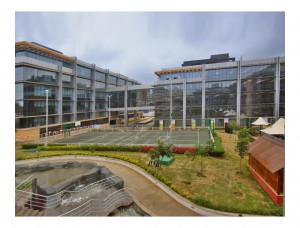Seven years ago, many people (including my mother-in-law) thought I had made a career-ending decision to accept a high-risk assignment and relocate to India. My mission: build from the ground up Cisco’s second headquarters, a Globalization Centre East in Bangalore focused on innovation, talent and partner development that envisioned 10,000 employees in three years, including the top 10% of worldwide talent. My charter included developing a world-class technology campus that also served as a showcase for incubating and advancing Smart City services worldwide, and to become the most relevant ICT company in India.
Was it the right decision?
 Although half a world away from Cisco’s corporate headquarters in the Silicon Valley, I thought the new job was still full of great promise. India was and still is the world’s largest democracy, had a growing talent pool, a zest for innovation, a co-operative government, aspirational middle class and a potentially huge economy purring along at 8% annual growth.
Although half a world away from Cisco’s corporate headquarters in the Silicon Valley, I thought the new job was still full of great promise. India was and still is the world’s largest democracy, had a growing talent pool, a zest for innovation, a co-operative government, aspirational middle class and a potentially huge economy purring along at 8% annual growth.
In four years, we partnered with national and local governments as well as an ecosystem of commercial businesses to architect and develop a fully networked campus.The Smart + Connected Community inBangalore integrated building systems with IT systems and applications onto one IP network, enveloped by artfully designed buildings and collaborative work spaces.
Today, the 1-million-square-foot Globalization Centre East campus employs more than 11,000 people, houses Cisco’s Research and Development, IT and customer support teams with the best talent in industry. The campus also meets my original charter  as the incubator for validating our industry-leading Smart + Connected Communities, especially Smart Cities, which today has projects on nearly every continent worldwide, encompassing more than 90 engagements.
as the incubator for validating our industry-leading Smart + Connected Communities, especially Smart Cities, which today has projects on nearly every continent worldwide, encompassing more than 90 engagements.
All that has been extremely rewarding to see, but was it the right decision?
We achieved every critical objective except one: growing ICT technology throughout India itself. In my four years of living in India and after a number of subsequent trips revisiting there, I now realize that the promise and opportunity of India can be unpredictable. After several years of nearly double digit growth, India’s economy spiraled down, experienced high inflation, a weakening rupee, allegations of government corruption and financial policy decisions that spooked the international investment community.
Continue reading “India: Transforming Promise into Performance”
Share:



 Although half a world away from Cisco’s corporate headquarters in the Silicon Valley, I thought the new job was still full of great promise. India was and still is the world’s largest democracy, had a growing talent pool, a zest for innovation, a co-operative government, aspirational middle class and a potentially huge economy purring along at 8% annual growth.
Although half a world away from Cisco’s corporate headquarters in the Silicon Valley, I thought the new job was still full of great promise. India was and still is the world’s largest democracy, had a growing talent pool, a zest for innovation, a co-operative government, aspirational middle class and a potentially huge economy purring along at 8% annual growth. as the incubator for validating our industry-leading Smart + Connected Communities, especially Smart Cities, which today has projects on nearly every continent worldwide, encompassing more than 90 engagements.
as the incubator for validating our industry-leading Smart + Connected Communities, especially Smart Cities, which today has projects on nearly every continent worldwide, encompassing more than 90 engagements.
CONNECT WITH US